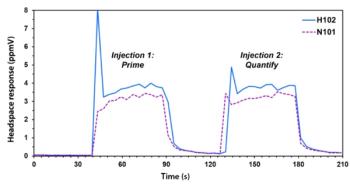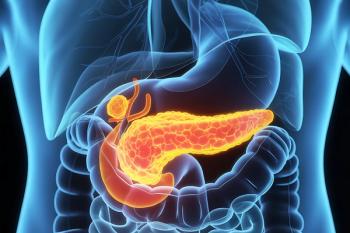
- LCGC North America-06-01-2019
- Volume 37
- Issue 6
Solving Recovery Problems in Solid-Phase Extraction
Improved practices in chemistry selection and sample processing may resolve recovery issues related to target analytes or internal standards.
Problems with quantitation in solid-phase extraction may be associated with an inability to recover target analytes or internal standards from the extraction sorbent. These problems may be the result of poor choices in the chemistry of the protocol, or issues with the processing of the method.
The choice of sorbent chemistry is very important, and, to achieve the optimum extraction selectivity, one needs to choose a sorbent based on the analyte and matrix component chemistry. It is very useful to know the LogP/LogD values and pKa values wherever possible. In general terms, the specificity of the sorbent–analyte interaction increases in the following order:
- non-functionalized polymer sorbents
- hydrophobic sorbents (such as C18, C8, CN; more polar sorbents are more selective)
- polar functionalized polymeric sorbents
- strong or weak ion-exchange sorbents
- mixed mode sorbents (silica or polymer hydrophobic materials with ion-exchange functional groups)
The strength of electrostatic interactions between analytes and sorbent, some 15 times stronger than simple hydrophobic interactions, mean that sorbents containing ion-exchange moieties are likely to give the most selective extraction under most circumstances.
Of course, although the ability of the sorbent to retain the analyte is of great importance, one also needs to consider the requirement to selectively elute the analyte, which again requires knowledge of the analyte chemistry and the interactions with the sorbent. For the avoidance of doubt, in solid-phase extraction, the ability to be selective invariably equates to the extent of analyte recovery.
To ensure optimum analyte retention, one should consider both the sample diluent and the sorbent equilibration solvent. If an analyte is loaded in a solvent that is too highly eluting, then analyte breakthrough may occur, or final elution volumes may be larger than necessary. For hydrophobic sorbents (and analytes), use a sample diluent with as little organic solvent as possible to ensure sample solubility. If the sorbent requires a conditioning (wetting) step, which is typically 100% organic solvent, ensure that an equilibration step is used to lower the elutropic strength of the solvent within the sorbent bed prior to the sample loading step.
If ion-exchange sorbents are used, the pH of the sample diluent should be adjusted to ensure target analytes are in their ionized form before loading. Similarly, the pH of the equilibration solvent should be adjusted to ensure that any weak ion-exchange ligands are in the charged form (the pKa of weak ion-exchange sorbents can be obtained from the manufacturer's literature), to promote efficient retention of the target analytes. Further, one should consider loading the sample at a lower flow rate than is usual, because of the point-to-point nature of the electrostatic interactions in ion exchange, which require some degree of molecular orientation to occur, and therefore are inherently slower than other retention mechanisms. It may be necessary to include a "soak" time, in which the flow is stopped and the sample remains stationary within the sorbent bed, to maximize analyte retention and prevent poor analyte recovery. Soak times of 30 s to several minutes can be necessary to ensure optimum recovery, and can be used with all types of sorbents.
Wash solvents, used to selectively elute interferences from the sorbent while retaining the analyte, should be strong enough to obtain the cleanest extract possible. However, care needs to be taken to avoid analyte breakthrough. Optimization of wash solvent strength should be performed by titrating the elution strength in discrete steps over several tubes or wells containing the same nominal analyte amount, plotting the solvent strength against analyte recovered, and choosing the highest solvent strength that does not contain any analyte response. Remember here also that the organic solvent type and composition can be used in tandem with solution pH and ionic strength in order to achieve a "strong" wash solvent that removes a large amount of sample matrix components, but does not cause analyte breakthrough. The "mixed-mode" phases are particularly useful in this respect, because the dominant retention mechanism can be "flipped" between hydrophobic and hydrophilic/electrostatic using pH and solvent strength, resulting in improved sample cleanliness and recovery.
Similarly, the strength of the elution solvent should be optimized by evaluating successively stronger solvents, until one observes an unacceptable amount of interferences or background within the final eluate. Again, solvent strength, pH, and ionic strength should all be considered for optimization of elution strength, and soak steps may also be required to optimize recovery.
One further, more esoteric cause of poor recovery is the phenomenon of dewetting. If a less miscible solvent is loaded onto the sorbent bed (hexane following an aqueous solvent, for example), it may be necessary to fully dry the sorbent bed under high vacuum (or positive pressure) for several minutes, to avoid exclusion of the second solvent from the sorbent pore structure by the first solvent.
Articles in this issue
over 6 years ago
Vol 37 No 6 LCGC North America June 2019 Regular Issue PDFover 6 years ago
Modern HPLC Pumps: Perspectives, Principles, and Practicesover 6 years ago
Arsenic Speciation on Hamilton PRP-X100over 6 years ago
Uncommon Fix for LC–MS Ion SuppressionNewsletter
Join the global community of analytical scientists who trust LCGC for insights on the latest techniques, trends, and expert solutions in chromatography.





